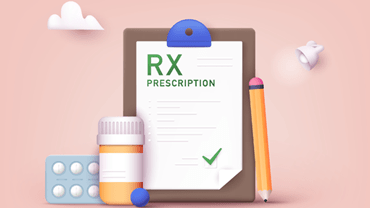 Blog
Blog
New Health Plan Prescription Drug Reporting Mandate
On December 27, 2020, President Trump signed the Consolidated Appropriations Act, 2021 (CAA). The CAA established consumer protections related to surprise billing and transparency in health care. One provision in the CAA requires that self-funded group health plans and fully insured health plans report specific data about prescription drug pricing (including prescription drug rebates) and health care spending to the federal government beginning on December 27, 2022. For fully insured plans, health insurance carriers will be responsible for making the necessary reporting from a legal standpoint. Employers who sponsor self-funded health plans should coordinate with their self-funded TPA and pharmacy benefit manager (PBM) to ensure timely data reporting.
Why is there a prescription drug reporting mandate?
As noted above, this new requirement calls for insurance companies and employer-based health plans to submit information regarding health care and prescription drug spending to the federal government, specifically the Department of Labor (DOL), Health and Human Services (HHS), and the Treasury (collectively, the Departments). Once submitted, the Departments will review the prescription drug and health coverage data to prepare a bi-annual publicly available report on prescription drug prices. The report intends to (a) promote prescription drug pricing transparency and (b) promote competition that can combat the high cost of prescription drugs.
What Employers Need To Comply?
Employers of any size that sponsor group health plans with prescription drug coverage. The term “group health plan” includes fully-insured and self-funded group health plans that are sponsored by private employment-based group health plans subject to ERISA, non-federal governmental plans (such as plans sponsored by states and local governments), and church plans. Filings are not necessary for account-based plans, such as Health Reimbursement Arrangements (HRAs), or excepted benefit plans, such as a stand-alone dental/vision plan.
Reporting by a PBM or Self-Funded TPA
Employers that sponsor a health plan can require their health insurance companies (for fully-insured products), TPAs (for self-funded health plans), and PBMs, to submit the data to HHS on behalf of the Employer Plan Sponsors. The request can be manifested in a written agreement. The regulations also allow the prescription pricing data to be submitted separately by a “reporting entity,” which is an entity other than or in addition to the Plan Sponsor.
Type of Data to Report
- General plan information such as the beginning and end dates of the plan year, the number of participants, beneficiaries or enrollees, and each state in which the plan or coverage is offered.
- The 50 most frequently dispensed brand prescription drugs and the total number of paid claims for each such drug;
- The 50 most costly prescription drugs by total annual spending, and the annual amount spent by the plan or coverage for each such drug; and,
- The 50 prescription drugs with the greatest increase in plan or coverage expenditures from the plan year preceding the plan year that is the subject of the report, and, for each such drug, the change in amounts expended by the plan or coverage in each such plan year (top 50 lists).
Additionally, plans and insurers must report total spending on health care services by the plan or coverage broken down by the type of costs (including hospital costs; health care provider and clinical service costs, for primary care and specialty care separately; costs for prescription drugs; and other medical costs, including wellness services); spending on prescription drugs by the plan or coverage as well as by participants, beneficiaries, and enrollees, as applicable; and the average monthly premiums paid by participants, beneficiaries, and enrollees and paid by employers on behalf of participants, beneficiaries, and enrollees, as applicable.
Another component of the report is the impact of rebates. Specifically, plan sponsors and insurers must report any impact on premiums by rebates, fees, and any other remuneration paid by drug manufacturers to the plan or coverage or its administrators or service providers, including the amount paid with respect to each therapeutic class of drugs and for each of the 25 drugs that yielded the highest amounts of rebates and other remuneration under the plan or coverage from drug manufacturers during the plan year (top 25 list). Finally, plan sponsors and insurers must report any reduction in premiums and out-of-pocket costs associated with these rebates, fees, or other remuneration.
Mandate Effective Date and Reporting Frequency
The deadline for 2020 and 2021 data is December 27, 2022*. Thereafter, the data must be submitted annually every June 1. The data will be formatted on a “reference year” or calendar year basis. For example, June 1, 2023, is the deadline for submitting 2022 data; June 1, 2024, is the deadline for submitting 2023 data.
*This deadline was initially set for December 27, 2021, but underwent a governmental-imposed delay until that same date in 2022.
Method of Reporting
Reporting entities will use The Center for Medicare & Medicaid Services (CMS) website, which has a Health Insurance Oversight System (HIOS) that features an RxDC module for the data upload. Ample time should be allotted to get an account set up in this system.
Health plans can utilize one or multiple third-parties to complete their filings, depending on their individual needs (i.e., a plan may use one vendor/TPA to report information related to their plan spend while incorporating their PBM to submit pharmacy data).
Additional Links and Resources:
About Amy Donovan
Amy is AP Keenan's Vice President of Legislative and Regulatory Affairs, authoring the firm's Briefings and position papers on legislation, regulation, and litigation that impact the firm and its clients.
Subscribe
Subscribe to the Keenan Blog





